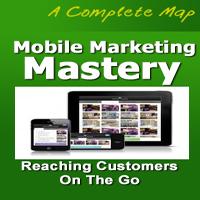



In the era of digital transformation, entrepreneurship has taken on a new face, with the internet providing unprecedented opportunities for innovation and business growth. Whether you're a seasoned entrepreneur or just starting your journey, digital entrepreneurship offers unique advantages and challenges. To navigate this dynamic landscape successfully, here are some essential tips to keep in mind:
Identify Your Niche: To stand out in the digital world, it's crucial to identify a niche that aligns with your interests and expertise. A niche market allows you to focus your efforts, target a specific audience, and differentiate yourself from competitors.
Market Research: Before diving in, conduct thorough market research. Understand your target audience, their needs, preferences, and pain points. This information will guide your business decisions and help you tailor your offerings.
Validate Your Idea: Test your business idea in the digital marketplace. Create a minimum viable product (MVP) to gauge interest and gather feedback from potential customers. This allows you to refine your concept before investing heavily.
Build A Strong Online Presence: Your digital identity is a cornerstone of your business. Invest in a professional website, robust social media profiles, and engaging content to showcase your expertise and build trust with your audience.
Leverage Technology: Embrace technology to streamline your business processes. Use tools and software for project management, customer relationship management (CRM), and analytics. Automation can save time and increase efficiency.
Digital Marketing: Craft a comprehensive digital marketing strategy. Utilize search engine optimization (SEO), content marketing, social media advertising, email campaigns, and pay-per-click (PPC) ads to reach your target audience and generate leads.
Content Is King: High-quality, informative content not only attracts visitors but also establishes your authority in your niche. Regularly publish blog posts, articles, videos, and other content that resonate with your audience.
Engage On Social Media: Social media platforms are valuable tools for engagement and brand building. Use them to connect with your audience, share content, and interact with potential customers.
Networking: Build a strong network of contacts within your industry. Attend webinars, conferences, and online forums to connect with other entrepreneurs, potential partners, and mentors.
E-commerce Strategies: If you're entering the e-commerce space, optimize your website for a seamless shopping experience. Implement secure payment gateways, provide clear product information, and offer excellent customer support.
Customer-Centric Approach: Focus on meeting the needs of your customers. Collect feedback, address their concerns, and continuously improve your products or services based on their input.
Adapt To Change: The digital world evolves rapidly. Be adaptable and open to innovation. Keep an eye on emerging technologies and trends that could benefit your business.
Data Analytics: Leverage data to make informed decisions. Analyze website traffic, conversion rates, and customer behavior. Data-driven insights can guide your strategies for growth.
Time Management: Digital entrepreneurship can be demanding. Efficient time management is key to balancing tasks, setting priorities, and maintaining a healthy work-life balance.
Resilience: Entrepreneurship is a journey with its ups and downs. Stay resilient in the face of challenges, and learn from failures. Persistence often leads to success.
Digital entrepreneurship offers exciting opportunities for those willing to embrace the online world's potential. By following these tips, you can harness the power of the digital realm, grow your business, and thrive in the ever-changing landscape of the digital entrepreneurship ecosystem. Remember, success may not come overnight, but with dedication and a well-thought-out strategy, it is within reach.
Navigating The Digital Landscape
 3. Create A Solid Business Plan: A well-thought-out business plan serves as your roadmap. Define your goals, strategies, budget, and revenue projections. Having a clear plan will help you stay on track and measure your progress.
3. Create A Solid Business Plan: A well-thought-out business plan serves as your roadmap. Define your goals, strategies, budget, and revenue projections. Having a clear plan will help you stay on track and measure your progress.
4. Build A Strong Online Presence: Your website is your digital storefront. Invest in professional web design, ensure it's mobile-responsive, and prioritize user-friendliness. A strong online presence is your first step in building trust with potential customers.
5. Content Is Key: High-quality, valuable content can attract and engage your audience. Regularly publish blog posts, articles, videos, or other relevant content that showcases your expertise and provides value to your visitors.
6. Implement SEO Strategies: Search engine optimization (SEO) is crucial for driving organic traffic. Use relevant keywords, optimize on-page elements, and earn quality backlinks to improve your website's search engine rankings.
7. Social Media Marketing: Utilize social media platforms to connect with your audience, share content, and build a community around your brand. A well-executed social media strategy can help increase brand awareness and engagement.
8. Embrace Email Marketing: Building an email list and sending out newsletters or promotional emails can be an effective way to nurture leads and convert them into customers. Personalized and well-timed emails can boost sales and customer loyalty.
9. Customer-Centric Approach: Focus on providing exceptional customer service. Respond promptly to inquiries and address customer concerns. Happy customers are more likely to become repeat buyers and brand advocates.
10. Data Analytics And Optimization: Regularly analyze your website's performance, sales data, and customer behavior. Use this data to make improvements and optimize your online business for better results.
11. Stay Informed And Adapt: The digital landscape is ever-changing. Stay updated on industry trends, emerging technologies, and best practices. Be open to innovation and adapt your strategies accordingly.






 Business Plan: Develop a detailed business plan that outlines your goals, strategies, budget, and revenue projections. This plan will serve as your roadmap and a valuable reference point throughout your online business journey.
Business Plan: Develop a detailed business plan that outlines your goals, strategies, budget, and revenue projections. This plan will serve as your roadmap and a valuable reference point throughout your online business journey.
Legal And Financial Setup: Register your business, obtain the necessary permits, and set up your financial structure. Ensure that your online business complies with all relevant laws and regulations.
Choose A Business Model: Decide on the online business model that suits your idea. Options include e-commerce, subscription services, affiliate marketing, and more. Select the one that aligns with your goals and resources.
Build A Strong Online Presence: Create a professional and user-friendly website or e-commerce platform. Invest in high-quality design, easy navigation, and mobile responsiveness. This is where your customers will interact with your business.
Content And Branding: Develop a strong brand identity and create high-quality, engaging content. Consistent branding and informative content will help you connect with your audience and build trust.
Product/Service Development: If you are selling products, source or create inventory. If offering services, prepare your service packages. Ensure that your offerings are of high quality and meet the needs of your target market.
Payment And Shipping Setup: Implement secure payment gateways and establish reliable shipping options for e-commerce businesses. Make the buying process as smooth as possible for customers.
Marketing Strategy: Craft a comprehensive online marketing strategy, including SEO, social media, email marketing, and paid advertising. Building a strong online presence and attracting your target audience is vital for success.
A Step-By-Step Guide To Success
 1. Define Your Purpose And Niche: The first step in your blogging journey is to determine your purpose and niche. What motivates you to start a blog, and what topics or subjects are you passionate about? Defining your niche helps you tailor your content to a specific audience, making it more appealing and relatable.
1. Define Your Purpose And Niche: The first step in your blogging journey is to determine your purpose and niche. What motivates you to start a blog, and what topics or subjects are you passionate about? Defining your niche helps you tailor your content to a specific audience, making it more appealing and relatable.
2. Choose A Blogging Platform: There are various blogging platforms available, with WordPress, Blogger, and Medium being popular choices. Select a platform that suits your needs, offers flexibility, and aligns with your technical comfort level. Many platforms are user-friendly and do not require extensive technical skills.
3. Domain And Hosting: If you want full control over your blog's branding, consider purchasing a domain name and hosting. This provides a more professional and personalized touch to your blog's web address, giving you a unique online identity.
4. Content Creation: The heart of your blog is your content. Start creating well-researched, high-quality blog posts that resonate with your target audience. Focus on providing value, solving problems, or entertaining your readers. Consistency is key, so establish a posting schedule that you can maintain.
5. Blog Design And User Experience: Ensure your blog is visually appealing and easy to navigate. A clean and user-friendly design enhances the reader's experience, making them more likely to return for more content. Most blogging platforms offer customizable templates to help you achieve this.
6. Engage Your Audience: Building a dedicated readership is crucial. Engage with your audience through comments, social media, and email newsletters. Respond to comments and create a sense of community around your blog.
Enhancing Success In A Mobile-First World
 1. Mobile-First Design
1. Mobile-First Design
To excel in mobile marketing, it's essential to adopt a mobile-first approach to design. Your website, landing pages, and digital content should be created with mobile users in mind from the outset. This ensures that your online assets are optimized for mobile viewing, with responsive design and fast-loading pages.
2. Performance Optimization
Mobile users are notoriously impatient, and a slow-loading website can lead to high bounce rates. Optimizing the performance of your mobile site includes compressing images, minimizing code, and using content delivery networks (CDNs) to speed up the delivery of content to users' devices.
3. Responsive Email Marketing
Email marketing is a crucial component of many mobile marketing strategies. Ensure that your email campaigns are responsive, meaning they render well on various screen sizes. Optimize subject lines, preheaders, and email content to capture users' attention quickly.
4. Mobile SEO
Mobile search engine optimization (SEO) is essential for visibility in search results. Optimize your website and content for mobile search engines.
 Stay Competitive: Competition is fierce in almost every industry. Transforming your approach allows you to differentiate your business and gain a competitive edge.
Stay Competitive: Competition is fierce in almost every industry. Transforming your approach allows you to differentiate your business and gain a competitive edge.
Innovate And Improve: Transformation often involves innovation. Embracing new technologies, processes, and ideas can lead to improvements in efficiency, quality, and customer satisfaction.
Risk Mitigation: By diversifying your approach and adapting to new challenges, you can mitigate risks and increase your business's resilience in the face of unforeseen obstacles.
How To Transform Your Business Approach
Embrace Technology: Technology is at the heart of modern business transformation. Explore how emerging technologies, like artificial intelligence, automation, and data analytics, can enhance your operations, streamline processes, and offer new opportunities.
Customer-Centric Focus: Shift your approach to be more customer-centric. Listen to your customers, gather their feedback, and use it to tailor your products or services to their needs and preferences.
Data-Driven Decision-Making: Data is a goldmine of insights. Implement data-driven decision-making processes, utilizing analytics to make informed choices that drive business growth.
Agile Leadership: Cultivate a leadership culture that is agile and adaptable. Leaders who encourage creativity and innovation among their teams are more likely to succeed in transforming their businesses.
Diversify Revenue Streams: Relying on a single revenue stream can be risky. Explore opportunities to diversify your income sources, whether through additional products, services, or strategic partnerships.
Collaboration And Networking: Building strong connections within your industry and beyond can lead to opportunities for growth and transformation. Collaborate with other businesses, attend industry events, and engage in professional networking to stay updated on industry trends.
Employee Empowerment: Your employees are valuable assets in the transformation process. Encourage and empower them to share their ideas and feedback. Their on-the-ground insights can be instrumental in your business's evolution.